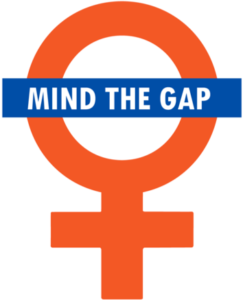A Just and Inclusive Workplace is Essential to Sustain Our Democracy
In 2017, the increased public visibility of the #MeToo movement made clear we were not doing enough to make the workplace safe from sexual harassment. In 2020, #BlackLivesMatter organizing similarly forced a broader and overdue reckoning with how deeply racial inequity runs in many institutions — including our nation’s workplaces, which need to be more inclusive.
The images of the first week of 2021 – a Confederate flag carried through the halls of Congress, people in the crowd breaking into the Capitol wearing shirts emblazoned with slogans about genocide of the Jewish people, a Black police officer against a mostly white crowd of insurrectionists – reinforce the urgency of our work to build a just and inclusive society.
As Cyrus said in December, in a recently-published interview in the Wall Street Journal, “Our democracy is not sustainable if don’t embrace equal opportunity.”
But to do that we need truly innovative approaches. We must expand our thinking about what the barriers are and how to break through them. As we welcome a new Administration that has committed to make racial justice and economic empowerment top priorities, and a new Congress that can move this agenda forward, we want to highlight some key innovations in government policy and workplace practices that can have the biggest impact.
1. Have the Security and Exchange Commission require transparency on diversity and inclusion. All large, publicly traded companies should make standard disclosures about hiring, representation, leadership and pay. As Cyrus explained to the Journal:
Merge SEC disclosures—annual reports, 10Ks—with advancing equal opportunity. For example, require companies to disclose race and gender data for their top 200 highest-paid employees. It’s a way to understand where the glass ceiling is. Do it by total compensation so it includes stock options. It’ll tell you who’s in the decision-making pool of the company.
And as we explained in our 2016 proposal to the SEC, this empowers investors, workers, customers and community stakeholders to make informed choices about where to spend their money.
2. Make your default hiring practices more inclusive, by ensuring you interview multiple women and people of color. Cyrus explains why this disrupts default assumptions:
If you have one woman versus two women on a slate, when you go to two women, it’s 79 times more likely that a woman will be selected [than if there was only one woman in the pool]. When you go from one to two people of color, the number goes up like 190 times. If there are multiple diverse candidates, they’re multiple times more likely to be hired. Why is that? When you have isolated, coveted jobs, you need to do something to change the norms because the presumptions and stereotypes are so deeply rooted.
Congress can lead the way by adopting the Rankin-Chisholm rule for its own hiring (a “Rooney Rule” for the Representatives), and by encouraging members to practice #CampaignEquity when they run for re-election.
3. Make our nation’s first civil rights law a more effective tool for racial justice, so it can work to close the racial wealth gap, ensure real equal access to credit, capital, employment and economic participation. Amending Section 1981 would enable it to live up to its promise.
4. Understand how building racial justice at work includes ensuring fair pay. As Pam shared in an online presentation last fall:
Make equity a top priority when you make decisions, take actions, design programs and measure results. Gender, race, sexual orientation, disability, or any aspect of your identity should not determine your outcomes in the workplace – including pay.
The Administration can do its part by reinstating and expanding pay data collection and reinvigorating equal pay enforcement – and by ensuring that we do not just talk about the gender pay gap. We must recognize and address pay gaps based on race and ethnicity and the particular impact of both on women of color.
5. Promote an inclusive workplace culture free of harassment, bias and discrimination – starting with the people who do the people’s work in our federal and state governments. Assessing culture, ensuring inclusive policies and practices, and acting quickly to address disrespectful behavior before it becomes toxic should be standard practice. President Biden should consider an Executive Order directing all federal agencies to adopt effective initiatives to promote equal employment opportunity and inclusive workplaces, and revoking a series of anti-DEI actions from the fall.
At the end of the day, Cyrus’ observation from December of 2020 seems even more true in January of 2021:
There is a moral case for diversity and inclusion. And there’s a business case: long-term value is tied to diversity and diversity is tied to innovation. But the last few years have told us there is a democracy case, too.
Working IDEAL provides trusted and innovative advice on inclusive workplaces, diverse talent, and fair pay. Contact us to learn more about the services we offer.
Authors: Pam Coukos and Cyrus Mehri

 It’s Equal Pay Day, and I’ve decided not to have
It’s Equal Pay Day, and I’ve decided not to have